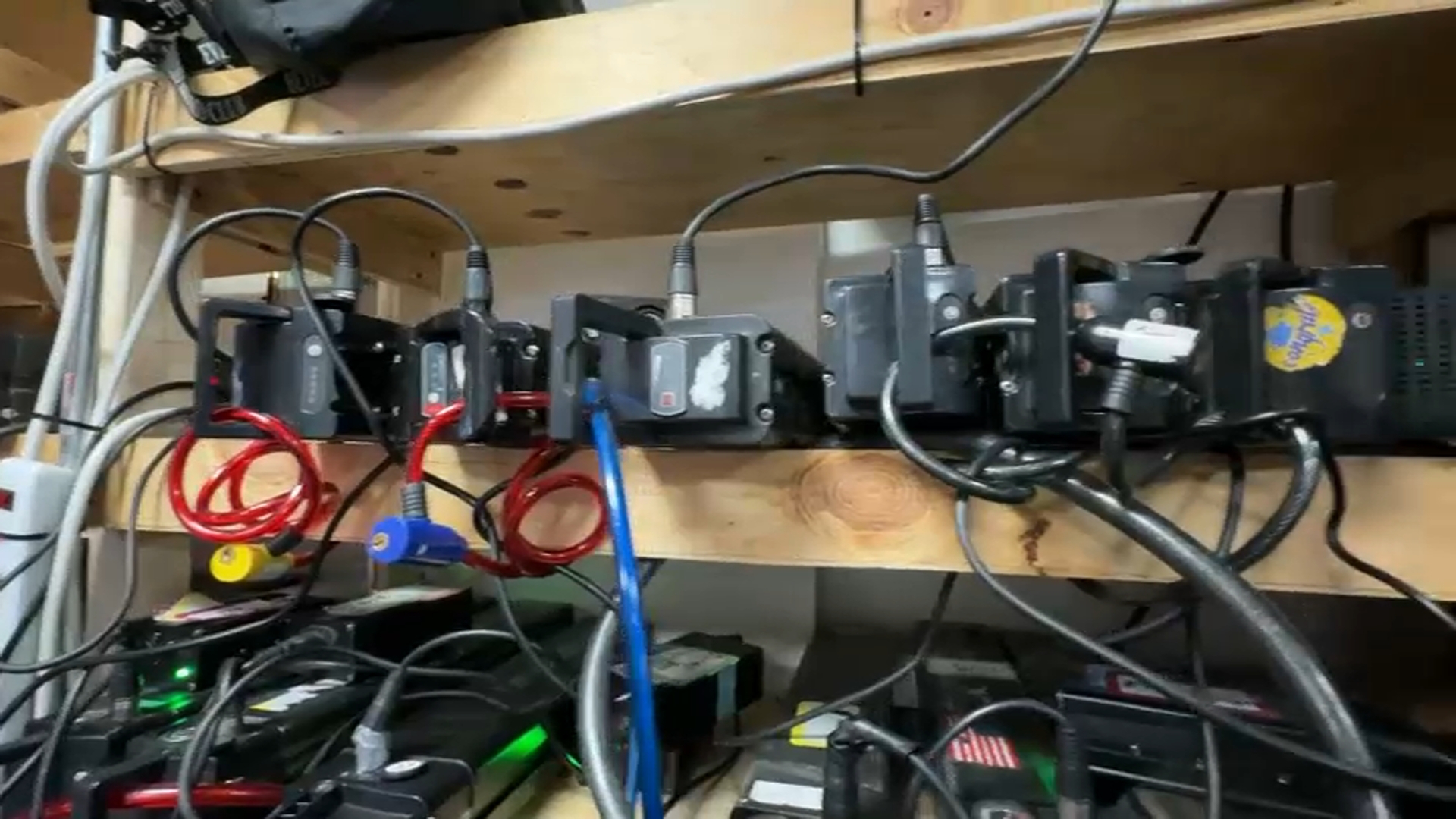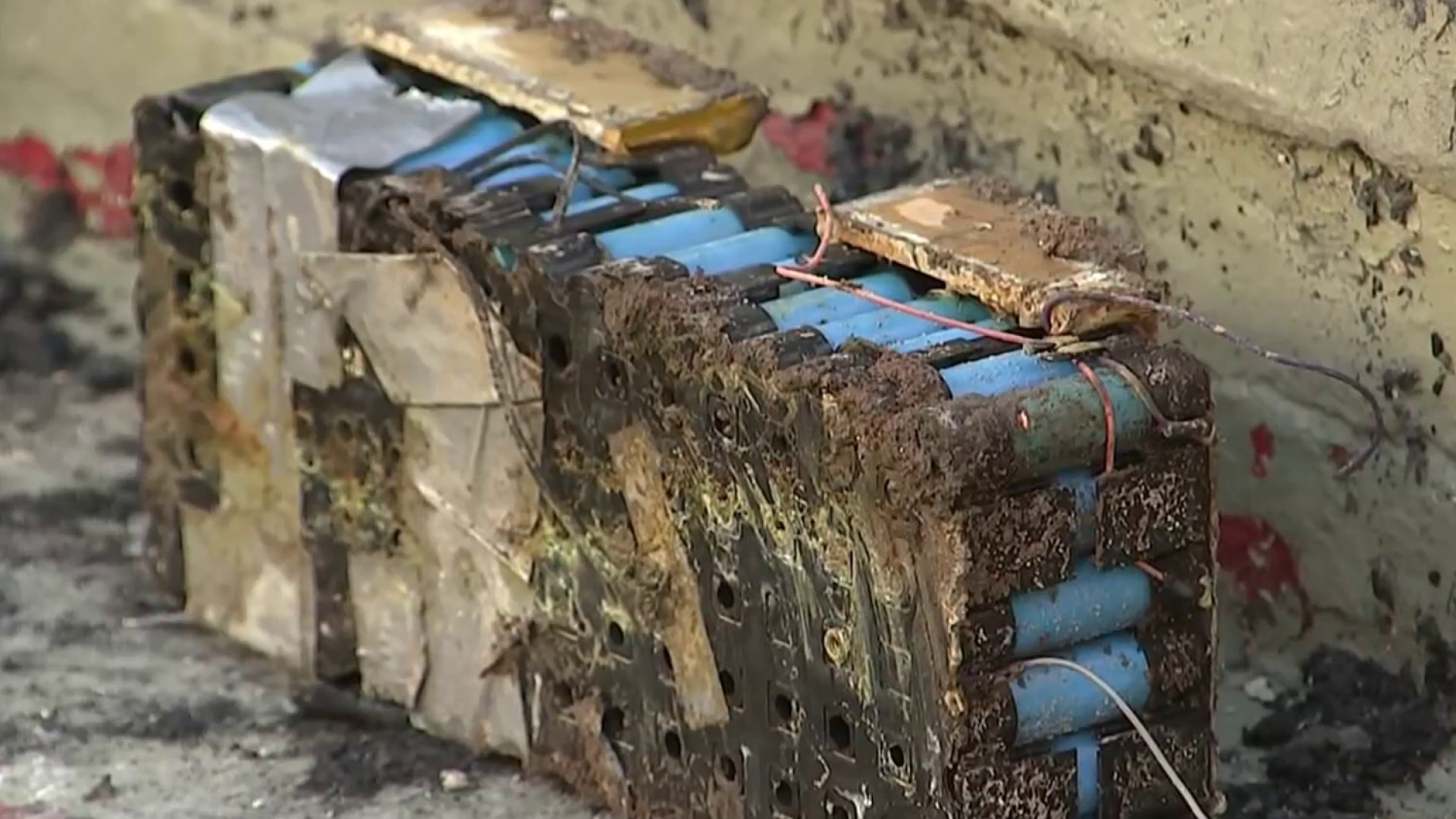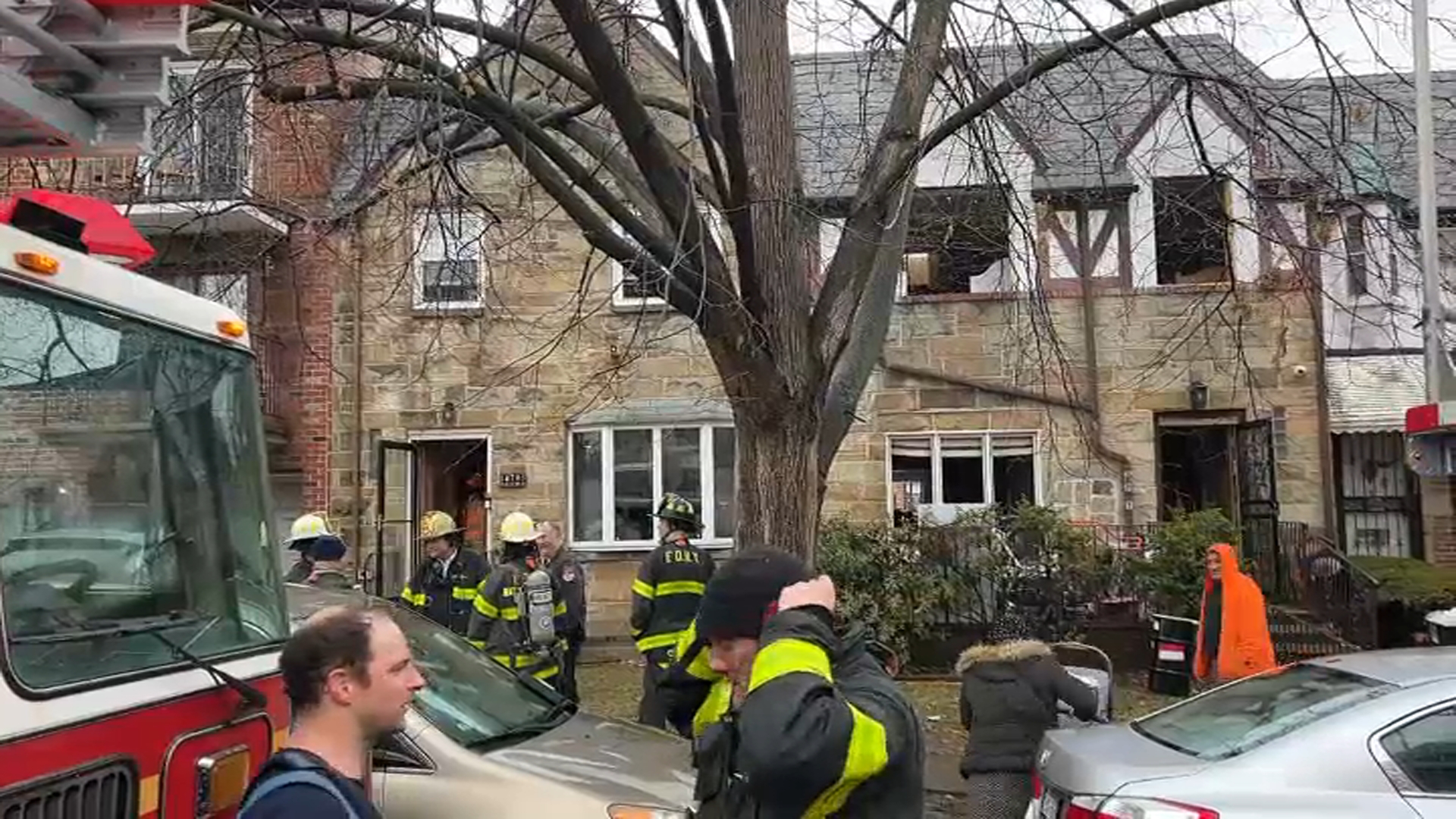Lithium ion batteries, which power thousands of e-bikes and e-scooters, account for an ever-increasing share of fires in New York City.
By now, most of us have seen grainy surveillance video of the batteries exploding into a white flashes of flame. But watching them explode — up close – helps reveal why these battery cells present such a challenge to modern fire safety.
The NBC New York I-Team partnered with Telemundo 47 Investiga to give viewers an up-close-and-personal view of how a lithium ion battery fire progresses, minute-by-minute. With the help of VTEC Laboratories in the Bronx, we punctured an e-scooter battery pack inside a fire-proof room outfitted with multiple cameras.
Recordings of the demonstration show how compromising a single battery cell inside the pack, leads to a chain reaction called “thermal runaway.” Essentially, when one battery cell combusts, the immense heat transfers to the next cell, leading it to catch fire. That heat then transfers to the next cell, and so on.
“Thermal runaway is that the battery goes into ignition and combustion and it keeps going in this process until it uses up all its energy,” said Neil Schultz, Executive Director of VTEC Laboratories. “During that period of time it gives off a large amount of heat and high temperature and it’s a good source of ignition for other objects around it or in contact with it.”
Get Tri-state area news delivered to your inbox. Sign up for NBC New York's News Headlines newsletter.
The video demonstration also revealed why lithium ion battery fires can be so deceptive.
After puncturing the first battery cell in the pack, there was an initial plume of smoke in the room, but after about four minutes, the smoke had mostly cleared and there were no visible flames. An untrained eye might have concluded the fire had fizzled out. But the battery pack was still heating up, and after about five minutes, the next battery cell popped, igniting the fire anew and, in turn, lighting nearby cardboard on fire.
From that point on, it took less and less time for each successive battery cell to overheat and catch fire.
Around 11 minutes into the demonstration, the cascade of overheating cells led to a final explosion so violent that it broke the equipment used to hold the battery pack down.
The concept of puncturing battery cells to model what happens in a lithium ion battery fire is not new. In 2020, the US Department of Transportation sponsored research using the puncture test to determine whether covering battery cells with a slightly wet, spongy material might suppress flames. Dr. James Quintiere, the study’s principal researcher and a University of Maryland Fire Protection Engineering expert, said the test was successful.
“The water in the sponge starts to boil at the surface of the battery and then cools the battery and stifles the runway reaction within the battery,” Quintiere said.
It is important to emphasize, in both Quintiere’s experiment and the I-Team/Investiga demonstration, battery cells were intentionally damaged and did not catch fire on their own. But it is not difficult to imagine some percentage of e-bike or e-scooter batteries getting banged up or busted on busy city streets, leading to an elevated fire risk.
According to the NYC Mayor’s Office, batteries in e-bikes and e-scooters caused 220 fires in 2022, up from just 44 fires in 2020. In the first two months of this year, Lithium Ion battery fires had already taken two lives and caused 40 injuries.
A group called Los Deliveristas Unidos is now pushing NYC to implement a new minimum wage for delivery workers – many of whom rely on e-bikes — in part because higher income would allow them to purchase certified battery packs, which tend to be safer but also more expensive.
“A lot of deliveristas would be able to invest in safer batteries if they were actually being paid a decent wage,” said Ligia Guallpa, director of the Workers Justice Project, a Brooklyn nonprofit which advocates for low-wage, mostly immigrant workers.
Fire experts have often expressed concern that most lithium ion battery fires begin with cheaper aftermarket charging adapters and uncertified replacement parts.
George Kerchner, a spokesperson for PRBA – the Rechargeable Battery Association, a trade group representing many lithium ion battery vendors and manufacturers — said that aftermarket batteries should not be confused with brand-name batteries that have been carefully matched with charging adapters and undergo testing and certification.
“It is important to recognize that many standards (e.g., UL) take a ‘systems approach’ to safety that mandate testing of the battery, charger, and device,” Kerchner said. “Low quality aftermarket batteries, counterfeit and ‘knock-off’ batteries, and off-spec chargers are a significant problem for certain applications.”
Kerchner said he does not believe requiring all batteries to be shipped with fire-proof coverings — like the sponge material, for example — would be realistic. But he said players in the lithium ion battery industry have been doing extensive research on ways to mitigate fire risk and companies are expecting new fire safety regulations on both a federal, state, and municipal level.
In New York City, Mayor Eric Adams recently signed a package of legislation regulating lithium ion batteries. On the federal level, Rep. Ritchie Torres (D-Bronx), Sen. Chuck Schumer (D-New York), and Sen. Kristen Gillibrand (D-New York) recently advanced legislation that would create nationwide standards for the testing and certification of e-bike and e-scooter batteries.
“The sheer speed and scale of these fires, of these explosions is staggering,” Torres said. “At the federal level, the scandal is not that we’re failing to regulate the safety of these batteries. The scandal is that we’re not even trying.”




